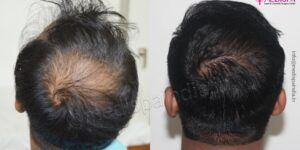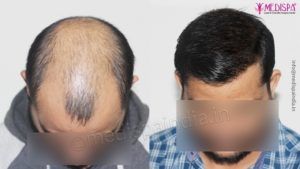
Hair loss can arise from a variety of causes, with genetic factors being the most common, often referred to as pattern baldness or androgenic alopecia. Another form of hair loss is alopecia areata, which is associated with autoimmune disorders.
Recent advancements in hair transplant methodologies have allowed individuals to achieve enhanced hair density, effectively concealing baldness while preserving a natural look. This elective procedure is accessible to anyone experiencing hair loss; however, it is crucial for the individual to meet certain medical criteria due to the surgical nature of the treatment.
To assess your eligibility for the procedure, a consultation with a qualified hair transplant surgeon is required. This evaluation involves a comprehensive examination of the scalp and an analysis of the patient’s medical history, which aids in determining the viability of the surgery.
What is alopecia areata?
Alopecia areata is an autoimmune disorder in which the immune system mistakenly targets its own hair follicles, viewing them as intruders. This immune reaction results in hair loss due to the damage inflicted on the hair follicles. The hair loss associated with alopecia areata often appears as small, distinct patches of baldness that may merge into larger areas. This condition is particularly noticeable in the eyebrows, eyelashes, and facial regions, as well as other areas of the body. The development of these patches can be sporadic, with cycles of activity and dormancy that may extend over several years, and there is a possibility of recurrence in the future.
How is occurs?
The precise etiology of alopecia areata remains a subject of ongoing research. However, it is widely accepted that genetic factors significantly contribute to the onset of this condition, especially among those with a familial background of autoimmune diseases, including Type 1 Diabetes and rheumatoid arthritis. Furthermore, the occurrence of alopecia areata may be influenced by several unknown environmental elements in conjunction with genetic vulnerabilities.
Male Alopecia Areata:
Alopecia areata is predominantly seen in males, affecting not only the scalp but also facial hair, as well as hair on the chest and back. It is crucial to distinguish between male pattern baldness and alopecia areata; the former is marked by a progressive thinning of hair, whereas alopecia areata typically manifests as distinct areas of hair loss.
Female Alopecia Areata:
In females, alopecia areata usually leads to hair loss on the scalp, as well as the eyebrows and eyelashes. Unlike male pattern baldness, which is characterized by overall thinning of hair, alopecia areata is defined by the presence of multiple small patches of hair loss.
Define hair transplant
A hair transplant is a voluntary procedure that patients can choose to undergo at their discretion; it is not classified as an emergency intervention. Individuals have the autonomy to determine the most suitable time for the procedure and to select an appropriate facility for their hair transplant.
During this outpatient surgical process, hair grafts are meticulously transferred to the areas of baldness on the recipient’s scalp, having been harvested from regions of the patient’s body where hair follicles are permanently established.
It is important to note that the hair transplant procedure is purely restorative in nature; it does not involve the creation of new hair follicles nor does it prevent further hair loss in areas where hair is still present. Currently, there are no available techniques that can regenerate lost hair follicles or halt irreversible hair loss.
To date, hair transplantation remains the most effective treatment for hair loss, and its success is significantly enhanced when performed by skilled and experienced professionals. For individuals seeking to restore hair to their bald areas and express themselves through various hairstyles, this procedure can indeed be life-changing.
Is hair transplant suitable for patients of Alopecia areata?
Several treatments for hair loss are available, including hair transplants, medications, extensions, and synthetic hair options. Maintaining hair wigs or artificial hair over an extended period can be quite challenging. Conversely, the efficacy of medications remains uncertain, as results may vary if the treatment is discontinued. Hair transplantation, the most widely recognized method, offers enduring benefits. Thus, whether dealing with androgenetic alopecia or alopecia areata, one can confidently assert that this is the optimal approach for addressing baldness.
The effectiveness of the treatment for each individual is contingent upon specific characteristics and conditions that must be met to proceed with the procedure. For successful outcomes, the donor site must possess a sufficient number of hair follicles to adequately cover the affected area.
It is essential for hair loss to be stable for a minimum of two to three years, as hair follicles will continue to shed from existing areas, potentially leading to the appearance of a failed transplant in cases of unstable hair loss.
Additionally, the surgeon will conduct a scalp biopsy to determine whether there is any inflammation present in the irritated skin. If no swelling is detected, a hair transplant may be feasible; however, if inflammation is present, it will be necessary to wait for it to subside.
In most stable conditions, hair transplantation yields positive results; however, in certain instances, the success rate may be around 75-80 percent, which is still a commendable outcome. Therefore, it is crucial to have a comprehensive understanding of the procedure’s success rates to make informed decisions. Improper assessments may also lead to hair loss in some cases.
Medispa centre for hair transplant in Jaipur is renowned for its excellence in hair loss treatment. You need not abandon your aspiration of achieving a successful hair transplant, as the hair transplant cost in Jaipur is remarkably affordable.






